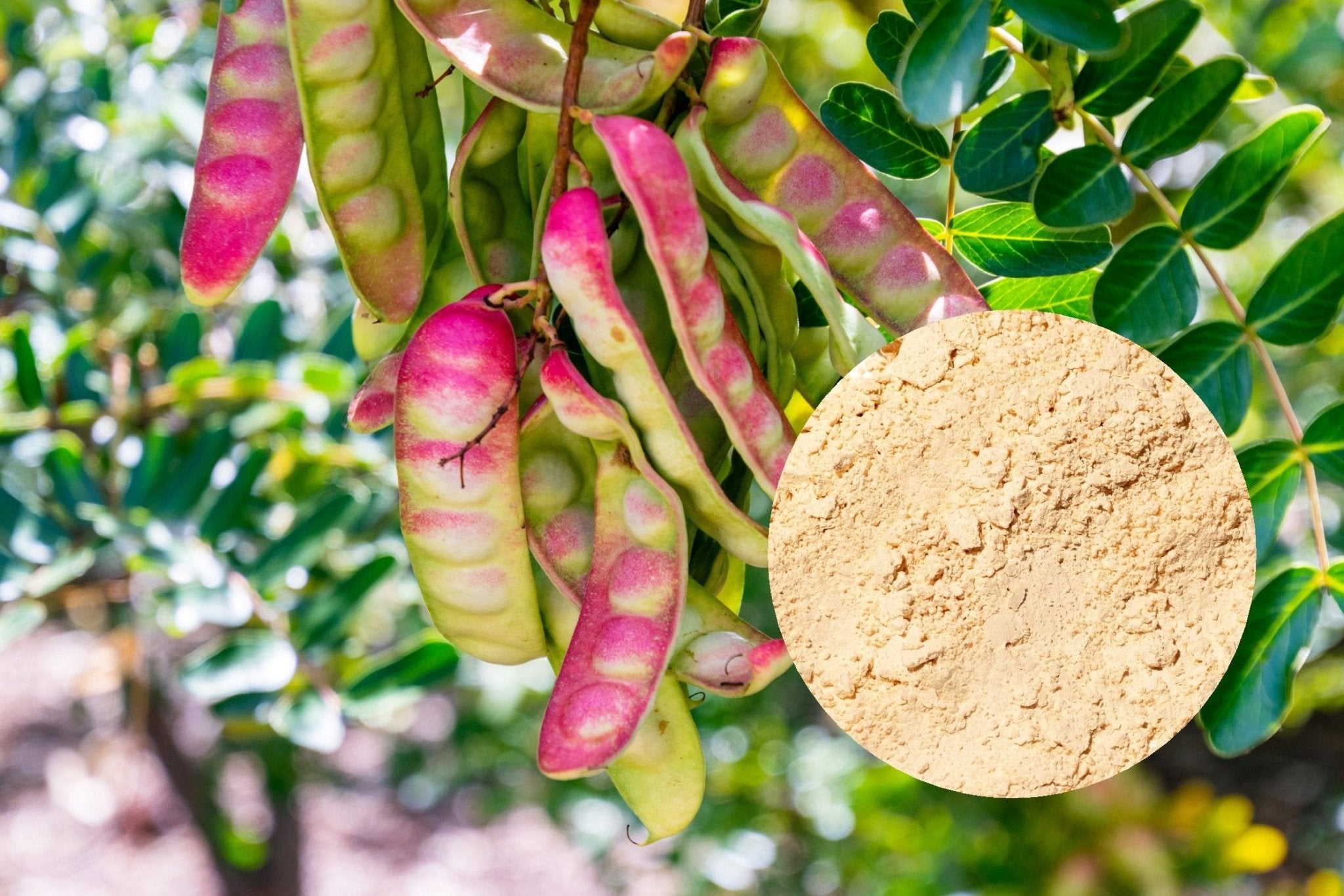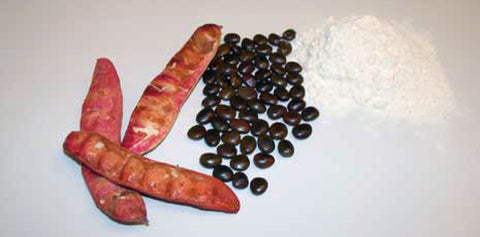
Tara Gum: A Natural Thickening Agent
SUBSCRIBE TO OUR BLOG
Promotions, new products, and recipes.
Introduction
In the world of food science and technology, various natural additives play a crucial role in improving the texture, stability, and overall quality of food products. Tara gum, derived from the seeds of the tara tree (Caesalpinia spinosa), is one such natural thickening agent widely used in the food industry. Here we will explore the origins of tara gum, its cultivation process, its applications in foods, and the benefits it offers to the food industry. We also have an excellent article on adding Tara gum for smoother ice cream and a Super Creamy Yummy Vanilla Ice Cream Recipe and you will enjoy
Origins of Tara Gum
The tara tree, scientifically known as Caesalpinia spinosa, is native to the Andean region of South America, particularly Peru, Colombia, and Bolivia. It is a leguminous plant belonging to the Fabaceae family and is also known by other names such as "divi-divi" and "spiny holdback." The tree grows at high altitudes, typically between 2,000 to 3,000 meters above sea level, where it thrives in the semi-arid climate and well-drained soils of the Andes.
The use of tara gum dates to ancient times when indigenous communities in the Andean region discovered its gelling and thickening properties. These communities used it for various purposes, including as a natural adhesive, a food ingredient, and in traditional medicinal practices. However, it was not until the 20th century that the commercial utilization of tara gum began to expand beyond the local communities.

Above: Tara pods and tara seeds which tara gum is made from.
Cultivation of Tara Gum
The tara tree is primarily cultivated for its seeds, which contain the gum. The cultivation process typically involves the following steps:
Seed Collection: Farmers collect mature seeds from the tara tree, usually during the dry season when the seed pods are fully developed and ready for harvesting. The seeds are extracted from the pods and processed to obtain tara gum.
Seed Germination: To initiate cultivation, the collected seeds undergo a germination process. The seeds are placed in a suitable medium with adequate moisture and temperature to facilitate germination. Once the seedlings have developed, they are transplanted into nursery beds.
Transplantation: After a few months of nurturing in the nursery, the young tara plants are transplanted into the main field. The spacing between the plants is carefully managed to ensure sufficient sunlight, water, and nutrients for each tree.
Growth and Maintenance: Tara trees are relatively hardy and require minimal maintenance. However, occasional pruning and weeding may be necessary to promote healthy growth.
Harvesting: The tara tree takes several years to reach maturity and to begin bearing fruit with seeds. Typically, it takes around six to eight years for the tara tree to produce a significant yield of seeds suitable for gum extraction. The harvesting of seeds is usually done manually, and the yield may vary depending on environmental conditions and agricultural practices.
Use of Tara Gum in Foods
Tara gum is primarily used as a food additive due to its exceptional thickening, stabilizing, and emulsifying properties. Its unique functional characteristics make it a valuable ingredient in a wide range of food products, including:
Dairy Products: Tara gum is often used in dairy products such as ice creams, yogurt, and cheese to improve texture and prevent phase separation. It helps maintain a smooth and creamy consistency, enhancing the overall sensory experience for consumers.
Bakery Items: In baked goods like bread, cakes, and pastries, tara gum helps retain moisture, extend shelf life, and provide a soft, moist crumb texture. It also enhances dough elasticity and improves the volume and shape of baked products.
Sauces and Dressings: Tara gum acts as a stabilizer in sauces, dressings, and gravies, preventing ingredient separation and ensuring uniform texture and appearance. It also helps enhance the mouthfeel and creaminess of these products.
Beverages: Tara gum is used in various beverages, including fruit juices, smoothies, and protein shakes, to maintain stability and prevent sedimentation. It also contributes to the smooth and consistent texture of these beverages.
Processed Meats: In processed meat products like sausages and luncheon meats, tara gum acts as a binder, improving water retention, and enhancing the texture and juiciness of the final product.
Gluten-Free Products: Tara gum is especially valuable in gluten-free food formulations, where it helps mimic the textural properties of gluten and improve the overall quality of gluten-free bread, cookies, and other products.
Benefits of Tara Gum in Foods
Tara gum offers several benefits to the food industry, contributing to improved product quality and enhanced consumer experiences:
Natural Origin: Tara gum is derived from a natural source, the seeds of the tara tree, making it an attractive option for food manufacturers seeking natural and clean-label ingredients. As consumers increasingly demand more natural and recognizable ingredients, tara gum fits well with this trend.
Versatility and Stability: Tara gum's versatile nature allows it to function as a thickening agent, stabilizer, and emulsifier across a wide range of food products. Its ability to stabilize and homogenize mixtures makes it a valuable tool for food formulators.
Improved Texture: The addition of tara gum to various food products improves their texture, resulting in creamier, smoother, and more pleasant mouthfeel. This enhancement can lead to increased consumer acceptance and preference for these products.
Cost-Effective: Tara gum can be a cost-effective alternative to other hydrocolloids and stabilizers, providing similar functionalities at a lower price point. This cost-effectiveness can benefit both food manufacturers and consumers.
Enhanced Shelf Life: By preventing phase separation, syneresis, and ingredient settling, tara gum helps extend the shelf life of many food products. This leads to reduced food waste and increased product availability for consumers.
Gluten-Free and Allergen-Free: Tara gum is naturally gluten-free and does not contain any common allergens, making it suitable for use in gluten-free and allergen-free food products. It helps food manufacturers cater to consumers with specific dietary restrictions or allergies.
Where to Obtain Tara Gum
Cape Crystal Brands is a company that specializes in the distribution and supply of various food ingredients, including tara gum. However, it is essential to note that the availability and specific offerings of products can change over time, so it is recommended to verify the status directly with Cape Crystal Brands or visit their website for the most up-to-date information.
Cape Crystal Brands makes Tara gum available through the following channels:
Product Catalog: In the Cape Crystal Brands catalog, Tara gum is featured as one of the thickening agents or stabilizers they supply to the food industry.
Packaging and Quantities: Tara gum is offered in different packaging options, such as bulk containers, bags, or smaller quantities tailored to the specific needs of their customers. The available packaging sizes may vary depending on the customer's requirements and the application of the tara gum.
Customized Solutions: Cape Crystal Brands offers customized solutions to their customers, working closely with food manufacturers to address their unique needs. This could involve formulating blends or providing technical support to ensure the optimal usage of tara gum in different food applications.
Regulatory Compliance and Quality Standards: Reputable companies like Cape Crystal Brands typically adhere to strict quality standards and ensure that their products meet all relevant food safety and regulatory requirements. They will provide documentation, such as Certificates of Analysis (CoA), to demonstrate the quality and purity of their tara gum.
Distribution Network: Cape Crystal Brands has a well-established distribution network that allows them to supply tara gum to various individual cooks, food manufacturers, processors, and distributors across different regions. This network enables them to efficiently deliver their products to customers in a timely manner.
Customer Support: Good companies prioritize customer support and maintain a team of professionals who can assist clients with product inquiries, technical support, and order processing. Cape Crystal Brands has a customer service team to handle any queries related to tara gum or other food ingredients they offer.
Conclusion
Tara gum, derived from the seeds of the tara tree, is a valuable natural thickening agent with diverse applications in the food industry. Its cultivation process, originating from the Andean region of South America, has seen increased interest and adoption worldwide. The use of tara gum in various food products contributes to improved texture, stability, and sensory experiences for consumers. Moreover, its natural origin, versatility, and cost-effectiveness make it an appealing choice for food formulators looking to meet consumer demands for natural, functional, and safe ingredients. As the food industry continues to evolve, tara gum will likely maintain its significance as an essential component in the formulation of various food products, benefiting both manufacturers and consumers alike. Companies like Cape Crystal Brands play a vital role in making this natural thickening agent readily available to chefs, cooks, and food manufacturers. For further information on Tara gum, you should check out this page.
Have your used Tara gum in ice cream? Please share with us in the comments section below!


|
About the Author Ed is the founder of Cape Crystal Brands, editor of the Beginner’s Guide to Hydrocolloids, and a passionate advocate for making food science accessible to all. Discover premium ingredients, expert resources, and free formulation tools at capecrystalbrands.com/tools. — Ed |
Enjoyed this post? Subscribe to The Crystal Scoop
Food-science tips, ingredient know-how, and recipes. No spam—unsubscribe anytime.
- Choosing a selection results in a full page refresh.



